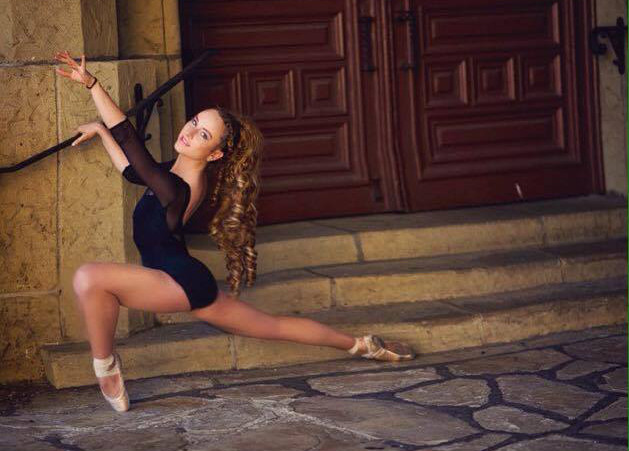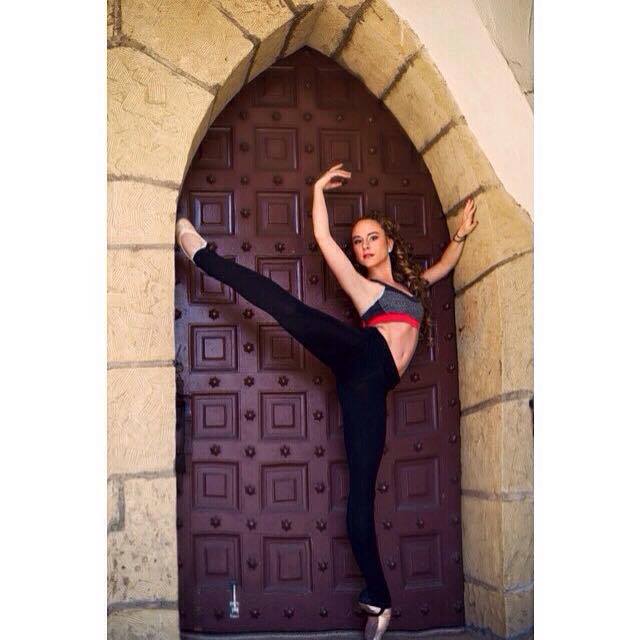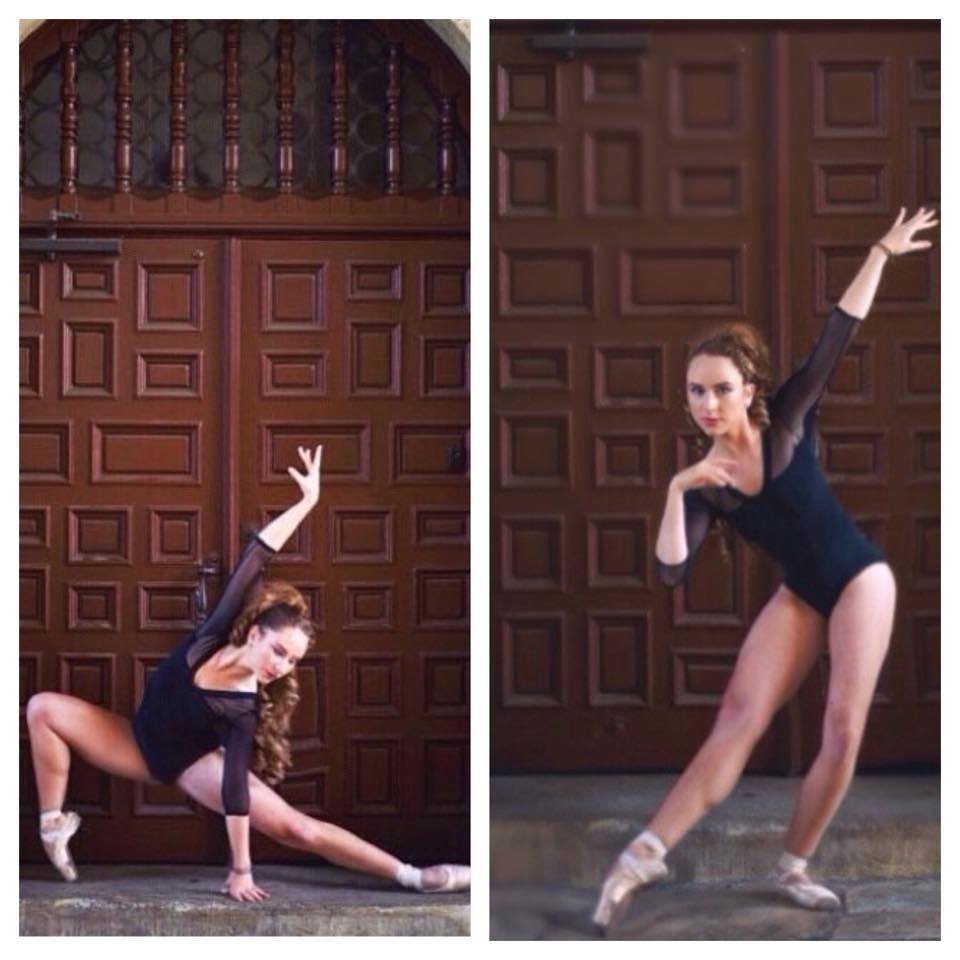Severine Reisp is a talented ballet dancer who is studying dance in the USA. I got to know Severine at the Ballet Academy in Berlin. Severine has some great tips to share for aerialists and you can also learn her story.
1. Severine, could you tell us a bit about yourself: how did you start ballet?
At age 4 my parents took me to see the ballet Giselle and I was super fascinated by the dancers for the whole performance. After that, I desperately wanted my mother to put me in a ballet school. In the beginning I only went 1 – 3 times a week for training. Later when I was 13, I passed the audition to attend a ballet boarding school in Essen. I didn´t like the environment there, as I was far away from home and the pressure for a 13-year-old girl alone without parents was very high. I moved back to Bielefeld, my hometown. There I took classes with the former head of the dance theatre Bielefeld who studied at the Royal Ballet School in England. At the age of 16 I received a scholarship to study in England, where I could take part in a vocational dance course (12 hours per week) in addition to finishing secondary school. After graduating I applied to the Joffrey Ballet School in New York. I was accepted and continued my dance career there. After a year there I was offered a traineeship with State Street Ballet in Santa Barbara, California. Since I also wanted to finish my college degree I decided to take a step back from classical ballet and now study dance formally in college whilst taking classes in psychology and film.

2. What was it like to get a study place at the Ballet Academy in the US?
How was your application process? What was the biggest challenge for you?
The admission process for the Joffrey Ballet School is similar to auditions in for ballet schools in Europe. You have to participate in an audition or send a video with ballet barre work, Diagonal, Center, Allegro, Jumps, Pointe Work and a ballet variation and a modern variation. The process was the same when I applied for a trainee position at the State Street Ballet. I also completed a Summer Intensive at the Joffrey Ballet School before starting the year round program. For me the most difficult thing was to have the courage to draw attention to myself. Americans know how to highlight their strengths, and it is important to get contacts in the professional world, to get the attention of choreographer and teacher. I don´t find it always easy to put myself in the foreground. In order to study at a college in the States, you have to do both the ACT and IELTS test and write a tremendous amount of essays. Unfortunately Germany does not provide scholarships, one is completely dependent on the colleges to provide financial aid. I applied to many to see where I get scholarships. I also got scholarships to attend Joffrey´s summer intensive and year round program. The application process took me more than a year and was really time consuming. My old secondary school did not offer any help to learn about the application process for the USA so I really had to put a lot of time into finding everything out about the admission requirements.
Since I am also a permanent resident of the USA, I can apply for some government sponsored student aid in the US.
3. Are there scholarships in the United States to study ballet?
It is completely dependent on the individual colleges or ballet schools in the US. Private colleges in the States offer more scholarships than State Universities. One should always ask each university. Especially ballet schools pay attention to your addition or video reel which will reveal them if you have the talent to get accepted and get scholarships.
4. What are the differences between ballet academies in Germany and in the US?
At many universities in the USA you can also study other subjects. For example, you can study dance and minor in Business or Psychology. Universities are structured according to the principle of Liberal Arts i.e. it combines subjects from various disciplines. Ballet schools also put more emphasis on diversity. Most dancers, who study there, train in ballet, Jazz, Contemporary and Modern.

5. How often and when do you train?
How is your usual ballet training? Are you training immediately after getting up? Do you have a specific sequence that you do every day in the morning? Do you stretch before sleeping?
Last year I had a morning class from 9-10.30 at the Company and then at 12-3 a Technique Class, Modern and Variations and then possibly rehearsals. I am currently enrolled at Sarah Lawrence College and my schedule is super packed. I have dance technique classes everyday and then my academic classes, psychology and film in addition to bi weekly one on one meetings with my professors where I will work on conference work (a research paper for the end of the semester). In the afternoon I also take part in a performance project twice a week where we learn choreography from Merce Cunningham. Then I also have other dance classes such as composition, dance history and laban notation. I also try to take classes in New York City as often as I can. The environment in college is very different from ballet conservatories but it is a great way to get to know people from other disciplines and to combine your passions.
6. How does ballet influence your eating habits? Do you eat meat or do you eat vegetarian or vegan food? What snacks do you buy or cook?
I actually eat everything. There was a time when I was too busy with my diet and I didn´t have enough energy for dancing. As a dancer you have to be in good shape but it is important to have a good and balanced meal. In the morning I usually eat cereal with fruit, salad for lunch and a piece of meat and in the evening – rice and vegetables. In between I eat bananas and muesli bars and chocolate:-). But I do not think it is good to put too much emphasize on a strict diet. In the US, there are many interesting granola bars. My favorite bar is macadamia nuts and white chocolate mixed.
7. What is your favorite food? Or you have a favorite recipe for the training?
My favorite food is spaghetti (preferably as my mom makes it and I haven´t quite figured out how to make just as she does it.
8. Which dance or perhaps fitness do you do besides ballet or as part of the training?
I often go to yoga or Pilates. Yoga helps me to work on both my body, mind and to relax. I prefer restorative yoga to core power yoga. Swimming also helps me a lot, when I have muscle tension. Going to the gym helps me with cardio and building up back strength. My father is a golf teacher and when I’m home, I try to spend some time on the golf course with him. Unfortunately, I’m not very good at golf.

9. Could you please give a few good exercises for the ballet warm-up for our readers?
Intermediate:
Feet: Flex and Pointe sitting and then circling outward in the first position and release again circling inward.
I would also make a few sit-ups and lunges to open the hips, it is often recommended. At the bar: 2-demi plie in the first, 1 grand plie, the same 2nd in the position. 8 Relevés in the first position.
Advanced: Plies in all positions. Then to the bar: 8 fast Degages in the first right and left, then 4, then 2, then press 1. Then on the bar: Leg Swings Attitude Front and rear. If one is well warmed up: take one leg with your hand and stretch it. 🙂
Many thanks Severine! It was very interesting to talk to you and I hope that our readers have taken a few good tips for themselves. I wish you a lot of success in your studies and in your ballet goals!
Photos: Cejae Photography
 Talk with aerial and equestrian circus artist
Talk with aerial and equestrian circus artist Rope Workshop by Emiliano Ron in Berlin
Rope Workshop by Emiliano Ron in Berlin Ekaterina Shustova, aerial performer from a circus family shares her experience
Ekaterina Shustova, aerial performer from a circus family shares her experience